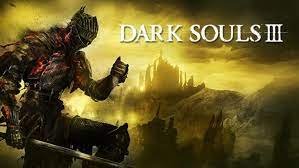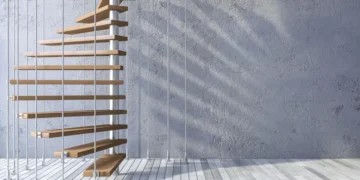As the name proposes, miniature paintings are beautiful high-quality paintings tiny in size. One of the unique elements of these paintings is the complex brushwork which adds to their unique character. The paintings’ tones are obtained from different standard sources like vegetables, indigo, valuable stones, gold, and silver. While artisans from one side of the planet to the other passed their separate subjects on through their paintings, the most well-known issue utilized in the miniature paintings of India contains the Ragas, an example of melodic notes, and strict and legendary stories.
Miniature paintings are made for a bit of scope, particularly for books or collections by the great miniature painter. These are executed on materials like paper and fabric. The Palas of Bengal are viewed as the trailblazers of miniature painting in India, yet the fine art arrived at its pinnacle during the Mughal rule. The custom of miniature paintings was additionally taken forward by the specialists of different Rajasthani schools of artwork, including the Kishangarh, Bundi Jaipur, Mewar, and Marwar.
Subjects Of Miniature Painting:
Gita Govinda
The Gita Govinda – a great twelfth-century Sanskrit sonnet by Jayadeva that portrayed Krishna’s sentiment with Radha and his relationship with the gopis of Vrindavana – was a most loved subject among Indian miniaturists.
In this outline, Radha and Krishna meet in the backwoods of Vrindavana, on the banks of the stream Yamuna. The trees with gently entwined blooming creepers behind the scenes, and the lotus-filled waterway in the frontal area, set the environment of sentiment for their meeting. They are instituting Lila Hawa, where they trade their garments and each adjusts the other’s persona – Radha goes about as Krishna, and Krishna is portrayed as bashful Radha.
Rasamanjari
The portrayal of affection in its many structures was a critical topic in Rajasthani and Pahari miniatures. Reflection and heartfelt love were profoundly entwined. Among the most loved texts for depicting sentiment was the Rasamanjari by Bhanudatta, a sixteenth century AD sonnet containing 163 verses, each portraying the direction of darlings. The Rasamanjari adjusts the nine rasas or feelings of traditional Indian folklore, attracting them to additionally arrange its Nayaks (legends) and nayikas (courageous women) as per their demeanor and conduct framed the premise of the topic in these Indian miniatures.
Baramasa
The bara masa, or “tunes of the year,” are traditional texts in light of every period of the Indian schedule. Old-style writers utilized similitudes praising the properties of divinities or a nayika (courageous woman) yearning for the arrival of the Nayak (legend) to address every month.
In a contemporary recovery of this practice, the craftsman skilfully catches the minutest subtleties of a unique arrangement of bara masa made in the eighteenth hundred years. The common environmental factors and air portrayed in the painting show the season, while the richly garbed ladies and men in average neighborhood clothing types stick to the authentic style of that time.
Step-by-step instructions to Select Miniature Painting Services
A – Three Things Before you Start
1 – Trust, Relationships, and Miniature Painting Services
Are your miniatures going to be painted in the manner in which your painter said they could be?
Will they let you know if there’s an issue?
Do you know what’s happening right now with your minis?
At the point when you request a book on Amazon, you don’t stress over not getting it or it not being the book you need. You believe that Amazon will not bomb you. Amazon procured that trust the same way your hairdresser does, and your miniature painting administration will.
Your administration should be contactable, stay faithful to their commitments, and give you a decent item. That is their entire work, and I’ll tell you the best way to track down those individuals. Be that as it may, the client has a section too:
– being clear about what’s required
– not moving the goal line (or changing the game) after the understanding has been made
– assisting with the inquiries the miniature painting administration could have.
Assuming you’re ready to do that, you become the kind of dream client for whom miniature painting administrations go above and beyond. The two players will trust one another, and your consumer loyalty becomes predictable and solid.
2 – The Myth of the ‘Right’ Miniature Painter or Miniature Painting Service
First up: there is certainly not a ‘right’ miniature painting administration: it’s simply not so essential. Since you’ve found a Golden Daemon, victor doesn’t mean you will have a decent encounter working with them. The person at the game store might not have a site; however, it could be the individual who paints every one of your armed forces on time, without shocks. Attempt to re-evaluate the issue as attempting to get the proper connection between you and your painter.
The right relationship is one where:
1 – you discuss well with one another
2 – There are fruitful exchanges, where achievement is characterized as your assumptions being met or surpassed
3 – The miniature painting administration deals with a significant emergency, and the client is shielded from cost, misfortune, or show.
3 – The Secret to Client-Painter Communication
Words are not a decent mechanism for examining craftsmanship. Perhaps the most concerning issue clients and painters have is that clients need to work out heaps of words, and painters need to work with pictures and variety. Here is a model from one commission we did:
Debris dark ponies. Light, ‘elven’ blue and white barding. Silver metal regions and blue jewels. Wood painted in grayish. Mythical beings with a silver protective layer with white and elven blue apparel.
Miniature Painting
Miniature painting is a shimmering star in the realm of imagination. This kind of craftsmanship is relatively more modest than some other structures. The heavenly material to ink down all contemplations and articulation is meaningful in Rajasthan. Specialists put on sorcery as botanical themes, pictures of legendary characters, creatures, and so forth, which merit appreciating.
History of Miniature Paintings
Miniature paintings trace back to the sixth and seventh 100 years when Indian artisans began displaying their demeanor on palm leaves. By the eleventh and twelfth 100 years, this conventional type of craftsmanship charmed the core of Mughals and Rajputs and spread like out-of-control fire in various pieces of India. Dynamic tones removed from minerals, vegetables, conch shells, valuable stones, indigo, and pure gold and silver got presented, and painters started giving an uproar of fluctuating topics.
Miniature Paintings Themes
The delicate brush strokes and the utilization of variety address the topical spectacle of miniature paintings. Innovative artisans are animated from the great past of Rajputana or Mughal times. They depict nature with the locations of courts, hunting episodes, blossoms, and creatures like elephants and ponies. The fragile pictorial introductions of the worshipped legends like Ramayana, Mahabharata, Bhagavata Purana, Rasikpriya, and Rasamanjiri are normal subjects of this kind of painting. Additionally, the sacred text and conventions of Jains and Buddhists track down the exceptional situation in this part of the artistry—the locations of courts, hunting episodes, blossoms, and creatures like elephants and ponies.
Establishments of Miniature Paintings
Various organizations have been built to clean the craft of Miniature Paintings. Pala School, Orissa School, Jain School, Mughal School, Rajasthani School, and Nepali School are a few famous focuses that underscore the brilliant mix of variety, culture, custom, and ability.
W is for World of Warcraft
One of the later patterns in toy gathering has been the development of the ‘Workmanship’ or ‘Fashioner’ toys, which were brought into the world in the 1990s; Wikipedia.
Of the multitude of parts of our leisure activity, this is the one I experience the most difficulty getting my head around; they are created in similar plants. And from similar materials as figures like the ones here, given similar completions but begin at £20/30+ per little figure and can retail for thousands. They are additionally frequently very peculiar with loads of blood, guts, trickling tissue, private parts, void eye attachments, and so forth…
How could a 10-inch rabbit robot with an open abdomen loaded with horrendous skulls or babies be worth multiple times the retail cost of a Wizards of the Coast 16-inch At Walker? So with the most recent form/version of WoW (as they are known) arriving at the leeway wholesalers at £1.99 from their unique retail cost of £9:99, I, however, it would plan to check out at them while pondering on their over-advertised more excellent siblings.
Conclusion:
So if you are interested in DIY and crafts, you must look forward to miniature paintings.













